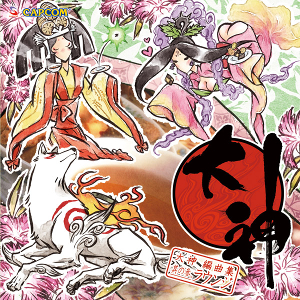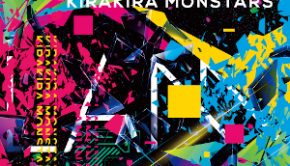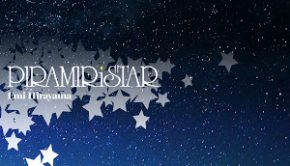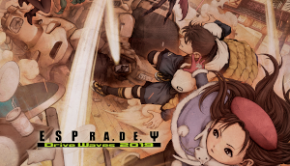Okami Arrangement Collection Vol. 3 -Lounge-
 |
Album Title: Okami Arrangement Collection Vol. 3 -Lounge- (Okami Henkyokushuu Vol. 3 -Lounge-) |
| Record Label: Suleputer |
|
| Catalog No.: CPCA-10379 |
|
| Release Date: April 15, 2015 |
|
| Purchase: Buy from CDJapan |
Overview
This year, Capcom has been very active in releasing a series of arrange albums dedicated to the original Okami soundtrack. The first volume, released in January, featured chiptune arrangements from a variety of chiptune artists in Japan as well as renditions done by the original composers for a web-based game. The second, released in February, featured jazz arrangements arranged by Zac Zinger, known for his work with the Video Game Orchestra. The third, recently released Okami Henkyokushuu Vol. 3 Lounge, features lounge arrangements by Akari Kaida and Sebastian Schwartz, both of ATTIC, Inc., and Supersweep, including Shinji Hosoe, Ayako Saso, Takahiro Eguchi, Fumihisa Tanaka, Teruo Taniguchi, and Kazuhiro Kobayashi. How does this collaborative album turn out compared to the other arrange albums released this year?
Body
The album opens with “Rising Sun,” by Supersweep’s Kazuhiro Kobayashi and manages to start off quite strongly. I really like the soft jazz undertones of the piece, in particularly with the piano. The blend of strings, Japanese instrumentation and influence, helps give the arrangement a sound that both respects the original, while also providing some nice standout moments on its own. Following that, Akari Kaida’s “Cursed Shinshuu Plains,” opens up beautifully with piano. From there, the arrangement takes on a jazzy approach with some R&B rhythm. The mix of synth and jazz piano, in combination with a nice brass solo, really helps craft one of the more successful arrangements from Kaida.
Akari Kaida is also responsible for a few other arrangements on the album. Another quite successful arrangement is “Two People Gazing at Each Other.” This one is a funky arrangement with some disco influence, particularly in the opening strings work. It has an extremely memorable melody and some excellent jazz flute solos that really elevate the arrangement. Her arrangement of “Sei-an City Commoners’ Quarter,” is one of her less successful arrangements. The piece takes on a smooth jazz approach, but in doing so, does sound a bit like elevator music, or something a bit more risqué. Its treatment of the source material is nice, but I think it may have been better executed using a different style of lounge music.
Her colleague at ATTIC, Inc., Sebastian Schwartz, arranges two pieces, “Nursery Rhyme (Medley),” a medley of the three short “Nursery Rhyme” themes on the original soundtrack and “Tsuzurao’s Theme.” The former is quite interesting and very open for interpretation. As the original pieces are quite short and contain no music aside from the sung melody of the robotic vocals, the arrangement itself, which incorporates these vocals into the arrangements, is, essentially, a new piece of music. I really like how each part of the arrangement, focusing on specific styles and sounding like a jam session, gives some unique sounds to the piece, while still managing to stay cohesive. His other arrangement also has a bit of a jam session vibe to it. There is a strong focus on percussion and bass in this arrangement that works well with the synthesized melody and is a piece that would make for pretty good background music in a lounge.
The rest of the arrangements are done by the various members of Supersweep and cover a variety of styles. Teruo Taniguchi’s “Ushiwaka Appears” is a very beautiful piece that gives off a bit of a beach vibe. The mallet percussion is a nice instrument for the lead melody while the strings and percussion help give it a great calypso sound. Fumihisa Tanaka’s take on “Okikurmi the Hero,” is most definitely the outlier on an album full of softer songs, with its club/lounge approach to it. However, I feel that this is definitely a strong arrangement as the groovy dance beat and jazzy piano chords mixes quite well with the strings-led melody and fun synth solos. Another artist who takes the electronic approach, Takahiro Eguchi, opts for a chill lounge piece with his arrangement of “Theme of the Heavenly Gods Tribe.” This piece features some beautiful ethereal soundscapes with an absolutely divine piano-led melody that really brings the piece home. Of course, there are other elements, such as soft percussion and strings, but they aren’t the parts of the arrangements that stand out the most.
My favorite arrangement on the album is Ayako Saso’s jazz cover “Twin Devils Moshirechik and Kotanechik Extermination.” This arrangement features some slick bass guitar, keyboards, and some awesome guitar work by Michio Okamiya. I also feel that it’s the most creative arrangement on the album and would work perfectly in a jazz lounge. Shinji Hosoe’s “Kamiki Village” is a more relaxing piece that combines soft tones with Japanese instrumentation and a strong focus on percussion. It’s definitely a slow builder, slowly adding more elements to the piece as it progresses, culminating into a guitar solo by Michio Okamiya. It’s a nice piece and all of the elements combine together quite nicely. Lastly, Akari Kaida’s “Reset Thank You Version” ends the album with a jazz cover of the vocal theme for the game. There is a nice combination of Japanese instrumentation, that dominates a majority of the arrangement, and jazz piano that really helps bring a nice crispness to the arrangement. While it would have been nice to also include vocals like the original, that’s just a minor criticism, as the melody is strong without them.
Summary
In the end, the Okami Henkyokushuu Vol. 3 Lounge album is a fairly enjoyable album. Given that lounge style music is not something with which I would normally associate the soundtrack to Okami, the interpretations, for the most part, are enjoyable. There are some standout pieces as well as some pieces that don’t quite work as well, but those are in the minority. For fans of the arrangers involved or the original soundtrack, there is certainly something on the album worth checking out.
Do you agree with the review and score? Let us know in the comments below!
4
Posted on May 18, 2015 by Don Kotowski. Last modified on January 19, 2016.














